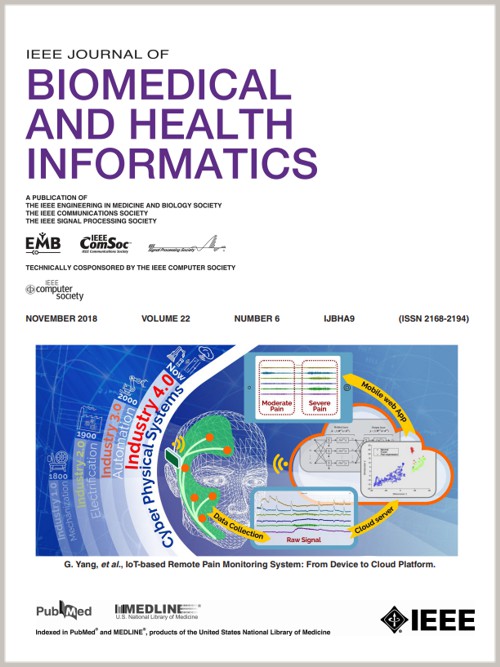HepNet: Deep Neural Network for Classification of Early-Stage Hepatic Steatosis Using Microwave Signals
IF 6.7
2区 医学
Q1 COMPUTER SCIENCE, INFORMATION SYSTEMS
IEEE Journal of Biomedical and Health Informatics
Pub Date : 2024-10-31
DOI:10.1109/JBHI.2024.3489626
引用次数: 0
Abstract
Hepatic steatosis, a key factor in chronic liver diseases, is difficult to diagnose early. This study introduces a classifier for hepatic steatosis using microwave technology, validated through clinical trials. Our method uses microwave signals and deep learning to improve detection to reliable results. It includes a pipeline with simulation data, a new deep-learning model called HepNet, and transfer learning. The simulation data, created with 3D electromagnetic tools, is used for training and evaluating the model. HepNet uses skip connections in convolutional layers and two fully connected layers for better feature extraction and generalization. Calibration and uncertainty assessments ensure the model's robustness. Our simulation achieved an F1-score of 0.91 and a confidence level of 0.97 for classifications with entropy ≤0.1, outperforming traditional models like LeNet (0.81) and ResNet (0.87). We also use transfer learning to adapt HepNet to clinical data with limited patient samples. Using 1 H-MRS as the standard for two microwave liver scanners, HepNet achieved high F1-scores of 0.95 and 0.88 for 94 and 158 patient samples, respectively, showing its clinical potential.HepNet:利用微波信号对早期肝脏脂肪变性进行分类的深度神经网络
肝脂肪变性是慢性肝病的一个关键因素,但很难早期诊断。本研究介绍了一种利用微波技术的肝脏脂肪变性分类器,并通过临床试验进行了验证。我们的方法利用微波信号和深度学习来改进检测,从而获得可靠的结果。它包括一个模拟数据管道、一个名为 HepNet 的新深度学习模型和迁移学习。模拟数据由三维电磁工具创建,用于训练和评估模型。HepNet 在卷积层和两个全连接层中使用跳连接,以实现更好的特征提取和泛化。校准和不确定性评估确保了模型的稳健性。我们的模拟结果表明,在熵值≤0.1 的情况下,分类的 F1 分数为 0.91,置信度为 0.97,优于 LeNet(0.81)和 ResNet(0.87)等传统模型。我们还利用迁移学习使 HepNet 适应患者样本有限的临床数据。使用 1H-MRS 作为两个微波肝脏扫描仪的标准,HepNet 在 94 和 158 个患者样本中分别取得了 0.95 和 0.88 的高 F1 分数,显示了其临床潜力。
本文章由计算机程序翻译,如有差异,请以英文原文为准。
求助全文
约1分钟内获得全文
求助全文
来源期刊

IEEE Journal of Biomedical and Health Informatics
COMPUTER SCIENCE, INFORMATION SYSTEMS-COMPUTER SCIENCE, INTERDISCIPLINARY APPLICATIONS
CiteScore
13.60
自引率
6.50%
发文量
1151
期刊介绍:
IEEE Journal of Biomedical and Health Informatics publishes original papers presenting recent advances where information and communication technologies intersect with health, healthcare, life sciences, and biomedicine. Topics include acquisition, transmission, storage, retrieval, management, and analysis of biomedical and health information. The journal covers applications of information technologies in healthcare, patient monitoring, preventive care, early disease diagnosis, therapy discovery, and personalized treatment protocols. It explores electronic medical and health records, clinical information systems, decision support systems, medical and biological imaging informatics, wearable systems, body area/sensor networks, and more. Integration-related topics like interoperability, evidence-based medicine, and secure patient data are also addressed.
 求助内容:
求助内容: 应助结果提醒方式:
应助结果提醒方式:


